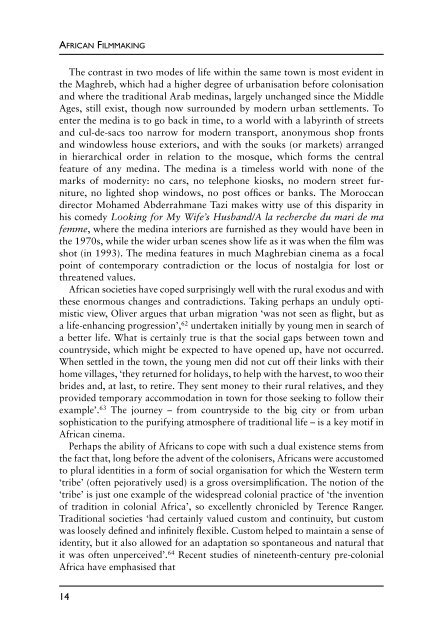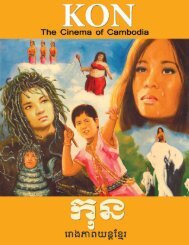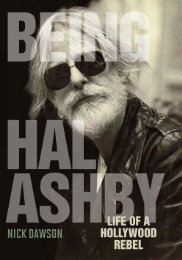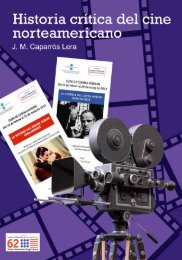1RLv6mX
1RLv6mX
1RLv6mX
You also want an ePaper? Increase the reach of your titles
YUMPU automatically turns print PDFs into web optimized ePapers that Google loves.
AFRICAN FILMMAKINGThe contrast in two modes of life within the same town is most evident inthe Maghreb, which had a higher degree of urbanisation before colonisationand where the traditional Arab medinas, largely unchanged since the MiddleAges, still exist, though now surrounded by modern urban settlements. Toenter the medina is to go back in time, to a world with a labyrinth of streetsand cul-de-sacs too narrow for modern transport, anonymous shop frontsand windowless house exteriors, and with the souks (or markets) arrangedin hierarchical order in relation to the mosque, which forms the centralfeature of any medina. The medina is a timeless world with none of themarks of modernity: no cars, no telephone kiosks, no modern street furniture,no lighted shop windows, no post offices or banks. The Moroccandirector Mohamed Abderrahmane Tazi makes witty use of this disparity inhis comedy Looking for My Wife’s Husband/A la recherche du mari de mafemme, where the medina interiors are furnished as they would have been inthe 1970s, while the wider urban scenes show life as it was when the film wasshot (in 1993). The medina features in much Maghrebian cinema as a focalpoint of contemporary contradiction or the locus of nostalgia for lost orthreatened values.African societies have coped surprisingly well with the rural exodus and withthese enormous changes and contradictions. Taking perhaps an unduly optimisticview, Oliver argues that urban migration ‘was not seen as flight, but asa life-enhancing progression’, 62 undertaken initially by young men in search ofa better life. What is certainly true is that the social gaps between town andcountryside, which might be expected to have opened up, have not occurred.When settled in the town, the young men did not cut off their links with theirhome villages, ‘they returned for holidays, to help with the harvest, to woo theirbrides and, at last, to retire. They sent money to their rural relatives, and theyprovided temporary accommodation in town for those seeking to follow theirexample’. 63 The journey – from countryside to the big city or from urbansophistication to the purifying atmosphere of traditional life – is a key motif inAfrican cinema.Perhaps the ability of Africans to cope with such a dual existence stems fromthe fact that, long before the advent of the colonisers, Africans were accustomedto plural identities in a form of social organisation for which the Western term‘tribe’ (often pejoratively used) is a gross oversimplification. The notion of the‘tribe’ is just one example of the widespread colonial practice of ‘the inventionof tradition in colonial Africa’, so excellently chronicled by Terence Ranger.Traditional societies ‘had certainly valued custom and continuity, but customwas loosely defined and infinitely flexible. Custom helped to maintain a sense ofidentity, but it also allowed for an adaptation so spontaneous and natural thatit was often unperceived’. 64 Recent studies of nineteenth-century pre-colonialAfrica have emphasised that14







